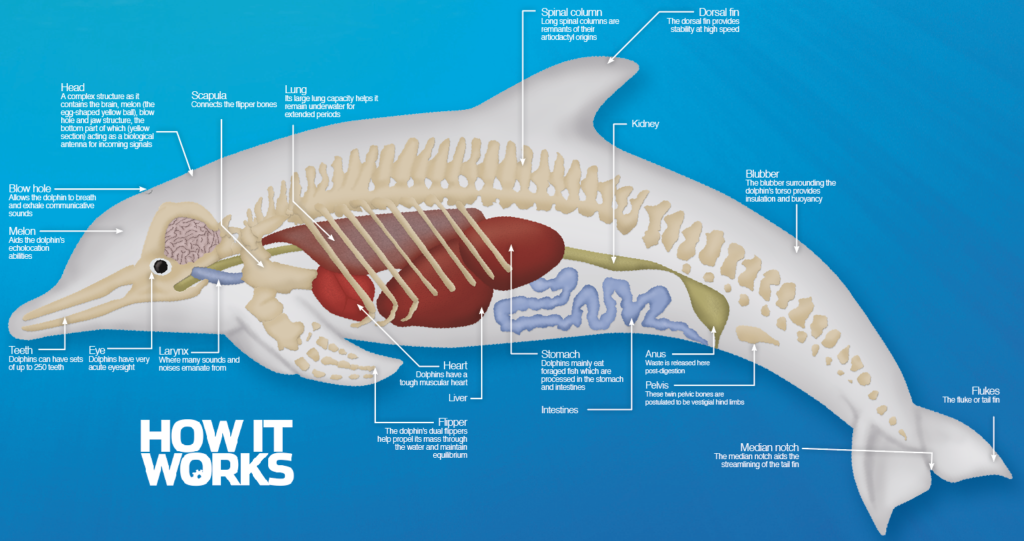The anatomy of a dolphin
by Scott Dutfield · 07/11/2019

Popular in human culture due to their intelligence and playfulness, dolphin species can be found all over the world, ranging in shape, size and character dramatically
There are many species of dolphin ranging from the modestly sized Maui dolphin, right up to the giant Orca killer whale. They are found all over the world, both in the ocean and also in rivers, and are considered to be the most intelligent of all marine mammals. All species are carnivorous, eating mostly foraged fish and squid, and numerous varieties hunt in packs, encircling schools of small fish to confuse them. Dolphins evolved from terrestrial mammals over 50 million years ago and are theorised by scientists to be descended from artiodactyls.
Dolphins have evolved to have a very streamlined fusiform (fat in the middle and tapered at both ends) body, ideally adapted for fast swimming and sudden, dynamic movements and changes in direction. This is aided by their tail fin (fluke) construction, which provides massive propulsion as well as acute directional control. Their prominent fin also aids mobility, providing stability at speed and through hairpin turns. At the front of their body lies their elongated head, jaw and beak structure, as well as a large area on the forehead called the melon. This is the part of the dolphin’s body that deals with echolocation (biological sonar) and is a crucial tool for communication, positioning and environmental awareness.
Indeed, dolphins have a very complex sensory system, driven by their vivid eyesight and echolocation ability. Through their tiny ear structure they can discern and hear frequencies up to ten times the upper limit of adult human hearing and scientists postulate that their lengthy jaw with its numerous
teeth (up to 250 in some species) acts like a biological antenna, receiving vibrations and sound waves and amplifying them within the skull. Processing this information is the dolphin’s brain, which is not only one of the largest but also one of the most complex of all mammals, be they marine or terrestrial.
Despite having no sense of smell whatsoever, dolphins can make a series of noises to communicate or aid echolocation by manipulating a series of nasal air sacs located just below their blowhole. To communicate with each other they use a series of burst-pulse sounds and frequency modulated whistles, while to determine their positioning and the positioning of other animals or areas of interest (such as humans on boats), a series of clicks are adopted. These clicks tend to be continuous and increase in frequency the closer the dolphin is to the target.
Anatomy of a dolphin
Under the skin of this intelligent mammal
Click to expand
This article was originally published in How It Works issue 007, written by Rob Jones
For more science and technology articles, pick up the latest copy of How It Works from all good retailers or from our website now. If you have a tablet or smartphone, you can also download the digital version onto your iOS or Android device. To make sure you never miss an issue of How It Works magazine, subscribe today!





